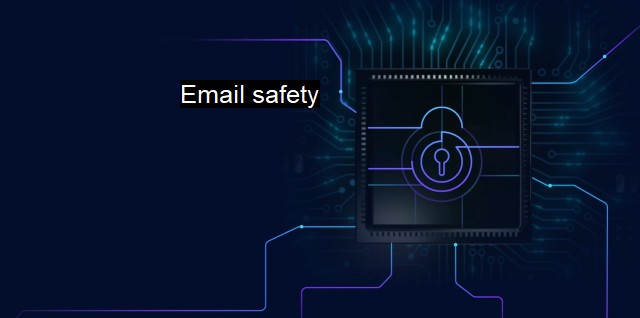What is Email safety?
Ensuring Email Safety in the Age of Remote Work: Cybersecurity Strategies and Anti-Virus Measures to Tackle Phishing Attacks, Spamming, and Cyber Attackers
Email safety, with pertains to practices and measures taken to safeguard your inbox and your communications from spam, phishing attacks, malicious scripts, and viruses. the concept is pivoted at the heart of cybersecurity since emails are one of the most common modes of digital communication and, as such, are prime targets for cyber threats.Email safety presents a twofold concern. On the one hand, there's the direct threat that malicious emails can pose to a user's system. On the other hand, poorly secured email accounts can pave way for hackers to infiltrate deeper into network infrastructures.
Often, malicious emails come veiled behind the mask of sophistication through persuasively legitimate grounds such as familiar display names, official logos, persuasive language, unknown file attachments, or links leading to suspicious websites. They aim to trick users into revealing sensitive information like passwords or credit card details or to download malware onto their systems. These deceptive techniques are termed 'phishing.'
Phishing is alarmingly silent, swift, and significant in damage. For businesses, the stakes are even higher. Attackers can exploit an employee's compromised email account as a springboard to access the organization's network, changing the narrative from individual to organizational cybersecurity.
The role of antivirus software is hence, pivotal in email safety. Antivirus programs enact multiple defense layers against phishing, spam emails, and malware transmission. Now, the detection mechanisms are powered more by heuristic, behavior-based algorithms and less by classic signature-based detection techniques.
Antivirus software actively scans the device for known threats and uses the heuristic approach to predict undetected or undefined new malware. Any message or attachment that's perceived malicious is hindered at the email gateway before it squirrels its way into the inbox. If accidentally clicked, robust antivirus software blocks malicious scripts from infecting a system.
Apart from external defense shield, there's a staggering demand for astute online behavior. Recognize that email safety is shaped as much by individual precautions as by technological safeguards. Sophisticated phishing emails may bypass antivirus filters, and this is where human discernment must step in. Never open unexpected attachments, even from known senders, without verifying. Scrutinize all emails, specifically those prompting hasty actions or containing oddly impersonal greetings.
Email safety is assured when stringent password protocols are practiced. Regularly changing, not sharing personal or professional email passwords, and using two-factor authentication (2FA) wherever possible enhances email security tremendously.
Equally, always keep your software, including the antivirus software, up-to-date. These updates regularly comprise of patches that fix detected vulnerabilities in the software, helping you stay ahead of the attackers.
Above all, consistent backups are tantamount in protecting loss of sensitive data in the event of email breaches. Regular, frequent backups secure information to warrant quick recovery.
Email safety stands at the intersection of cybersecurity and antivirus protection. While software solutions are essential to detect and deter malicious programs, personal precautions should likewise be adhered to for full-fledged cybersecurity. A powerful blend of antivirus defense, educated online behavior, and rigorous safeguarding practices realize the goal of email safety, fortifying digital worlds against potential cyber threats.

Email safety FAQs
What is email safety, and why is it important?
Email safety refers to the protection of email accounts and messages from malicious attacks, including viruses and phishing scams. It is important because email is a common method used by cybercriminals to gain access to personal information and sensitive data.What are some common email security threats?
Some common email security threats include phishing scams, malware attachments, and spam emails. Phishing scams involve tricking individuals into disclosing personal information, while malware attachments can infect computers with viruses. Spam emails often contain links that can redirect users to fake websites or download malicious software onto their devices.What are some best practices for ensuring email safety?
Some best practices for ensuring email safety include using strong passwords, enabling two-factor authentication, avoiding suspicious emails or links, and regularly updating antivirus software. It is also important to never share personal information or passwords in emails and to use caution when opening attachments or downloading files.What should I do if I suspect a security breach or receive a suspicious email?
If you suspect a security breach or receive a suspicious email, do not open any attachments or click on any links. Instead, report the incident to your IT department or antivirus provider, and delete the email from your inbox. You should also change your email password and monitor your accounts for any unusual activity.| | A | | | B | | | C | | | D | | | E | | | F | | | G | | | H | | | I | | | J | | | K | | | L | | | M | |
| | N | | | O | | | P | | | Q | | | R | | | S | | | T | | | U | | | V | | | W | | | X | | | Y | | | Z | |
| | 1 | | | 2 | | | 3 | | | 4 | | | 7 | | | 8 | | |||||||